Welcome to the Ultimate Wing Chun Kung Fu Guide
Whether you’re a curious beginner, a lifelong martial arts enthusiast, or someone searching for a powerful self-defence system, this Wing Chun Kung Fu Guide is your complete resource.
Wing Chun is more than just a martial art — it’s a philosophy, a combat system, and a cultural legacy. In this guide, you’ll explore the rich history of Wing Chun, from its origins in Southern China to its rise in modern martial arts culture.
We’ll cover everything from the core principles and famous lineages to training techniques, and how it compares to other Kung Fu styles.
You’ll also find tips on how to get started, what to expect in your first class, and how to choose the right school for your journey.
This is your one-stop introduction to the world of Wing Chun Kung Fu — practical, direct, and steeped in tradition.
What Is Wing Chun Kung Fu?
Wing Chun is a Southern Chinese kung fu style built for close‑quarters combat. It relies on center‑line control, simultaneous block‑and‑strike tactics, and economy of motion—no flashy high kicks, just rapid punches, low kicks, and clever angles that overwhelm an attacker in seconds.
History & Origins
The Origins of Wing Chun
Wing Chun is a highly efficient Chinese martial art that emerged during the turbulent Qing Dynasty (1644–1912). Its origins are steeped in legend, blending history with folklore, but the core principles reflect a system designed for practical combat, particularly for smaller or weaker individuals facing larger opponents.
The Destruction of Shaolin and the Five Elders
According to tradition, the Qing government destroyed the Southern Shaolin Temple, fearing its monks were training rebels. Only Five Elders escaped, among them the Buddhist nun Ng Mui, a master of Shaolin Kung Fu. Hiding in the mountains, she sought to develop a new fighting method that did not rely on brute strength, making it accessible to those with smaller statures.
The Crane and the Snake: Nature’s Inspiration
A pivotal legend states that Ng Mui witnessed a battle between a crane (or sometimes a red-crowned crane) and a snake (or a mongoose). The crane used fluid footwork, deflections, and precise strikes, while the snake attacked with direct, rapid movements along a central line. Inspired, Ng Mui combined these traits with her Shaolin knowledge.
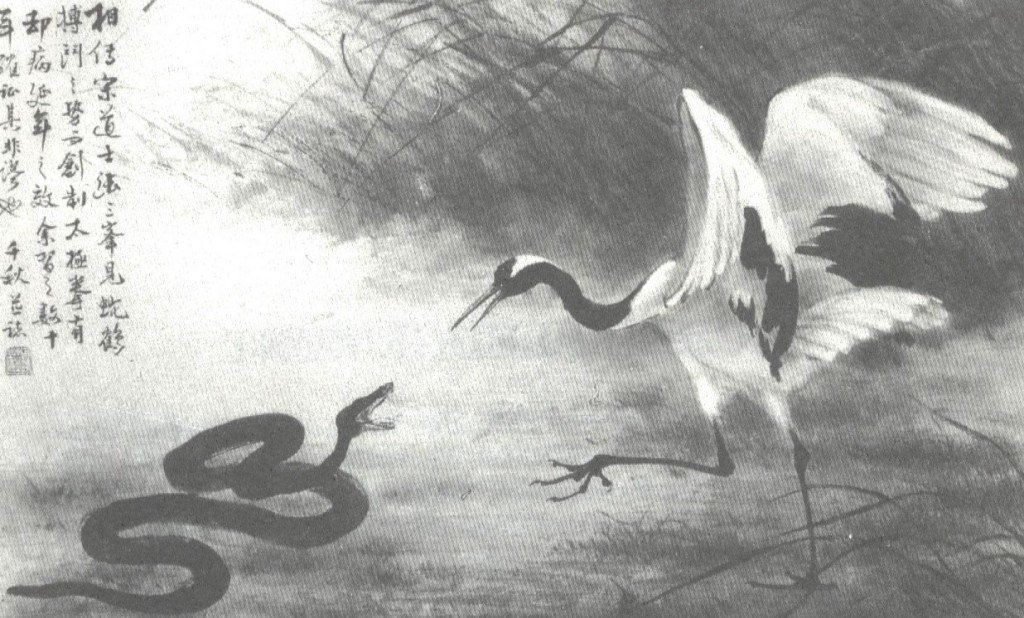
Yim Wing Chun and the Naming of the Art
Ng Mui later taught her system to Yim Wing Chun, a young woman being forced into marriage by a local warlord. Using these techniques, Yim defeated her aggressor, proving the art’s effectiveness. Afterward, she married Leung Bok Chau, who named the style “Wing Chun” (詠春, “Eternal Spring” or “Singing Spring”) in her honor.
Chu Shong Tin: The Grandmaster of Wing Chun’s Internal Power
Chu Shong Tin (1933–2014), often called “King of Siu Nim Tao” (小念頭之王), was one of Ip Man’s earliest and most respected students in Hong Kong. Renowned for his deep understanding of relaxation, structure, and internal energy in Wing Chun, he played a crucial role in preserving and evolving the art.
Early Life and Training Under Ip Man
Born in Guangdong, China, Chu moved to Hong Kong in 1949 and began training under Ip Man in 1951. He became one of the four ‘closed door’ students of Ip Man. Unlike many students who focused on fighting applications, Chu dedicated himself to mastering Siu Nim Tao (the first form), believing it contained the essence of Wing Chun’s power. His meticulous approach led him to develop exceptional effortless force and he became known as The King of Sil Lim Tao.
The Science of Relaxation and Internal Power
Chu Shong Tin emphasized that true Wing Chun power comes not from muscle tension but from proper structure, alignment, and muscle relaxation. Using this method, practitioners can learn to generate and overcome massive amounts of force, without relying on size or muscular strength. This makes it ideal for women and those with smaller builds. While every Wing Chun style relies on these concepts to some extent, CST took this idea even further.
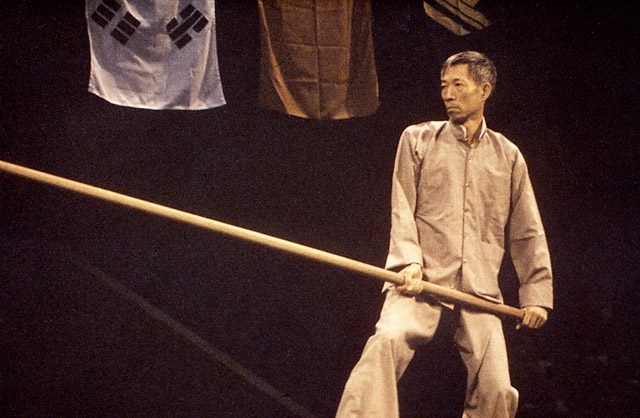
Benefits of Training Wing Chun
- Practical self‑defense for all body types
- Functional fitness—leg, core, and joint strength
- Improved posture & balance
- Mental calm & focus through form practice
- Supportive community
Wing Chun Terminology—Quick-Reference Bullets
- Sifu (SEE-foo) – teacher / master
- Sihing / Sije (SEE-hing / SEE-jay) – senior male / senior female student
- Sihing Dai / Sijé Mui (SEE-hing dye / SEE-jay mwee) – “big brother / big sister” (respectful address)
- Kwoon (KWUHN) – training hall / school
- Siu Nim Tau (SYOO neem tao) – “Little Idea,” the first form
- Chum Kiu (CHUM kyoo) – “Seeking Bridge,” second form
- Biu Jee (BYOO jee) – “Darting Fingers,” third form
- Muk Yan Jong (MOOK yun jong) – wooden dummy apparatus / dummy form
- Chi Sau (CHEE sao) – “sticky-hands” reflex drill
- Dan Chi (DAHN CHEE) – single-hand sticky-hands drill
- Gor Sau (GOR sao) – “cross-hands” light sparring / application drill
- Pak Sau (PAHK sao) – slapping-parry hand
- Tan Sau (TAHN sao) – palm-up deflecting hand
- Bong Sau (BONG sao) – wing-arm deflection
- Fook Sau (FOOK sao) – “controlling” or bridge-feeling hand
- Lap Sau (LARP sao) – pulling-hand trap
- Gan Sau (GUN sao) – splitting / scissoring block
- Jut Sau (JOOT sao) – jerking or “jerk-down” hand
- Huen Sau (HWEN sao) – circling / wiping hand
- Chain Punch (Lin Waan Kuen) (lin-WAHN-kwen) – rapid straight-punch sequence
- Yee Ji Kim Yeung Ma (EE jee kim YUNG mah) – basic “character-two” stance
Pronunciations are approximate Cantonese sounds for English speakers.
Famous Practitioners
These names lend Wing Chun credibility in both martial-arts circles and mainstream media.
- Bruce Lee – Studied under Ip Man; Wing Chun concepts form the backbone of Jeet Kune Do.
- Donnie Yen – Intensively trained for four Ip Man films and remains a vocal advocate.
- Michelle Yeoh – Used Wing Chun in multiple roles and credits it for on-screen realism.
- Wong Shun Leung – “King of Beimo” rooftop challenge fights; mentored many modern sifus.
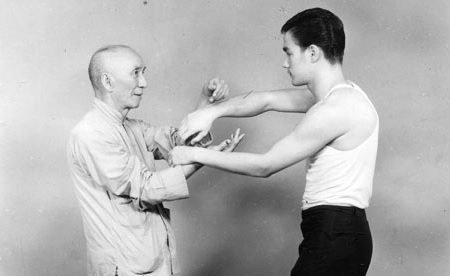
Wing Chun forms
Wing Chun comprises 3 empty hand forms, which are used more as training tools to practice different focus ans the structure of hand positions and strikes, in contrast to fighting an imaginary opponent. There are also 2 weapon forms: one for the butterfly knives and one for the 6-and-a-half-point pole, and a form for the wooden dummy.
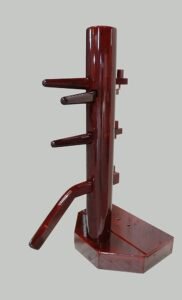
Siu Nim Tao (Small thought) performed by Instructor Seth Piszczuk of Adelaide University Wing Chun Kung Fu Club – one of Instructor Vinnie’s original teachers.
Wing Chun in Popular Culture
Wing Chun’s straight-line punches and sticky-hands drills have appeared everywhere from big-budget action films to modern video-games. These pop-culture moments keep the art in the public eye and often send new students racing to the nearest kwoon.
- Films
- Ip Man tetralogy (2008-19) – Donnie Yen’s portrayal of Ip Man reignited global interest.
- Warriors Two (1978) & The Prodigal Son (1981) – Sammo Hung’s choreography gave cinema its first Wing Chun fights.
- Wing Chun (1994) – Michelle Yeoh showcases a female master in period Hong Kong.
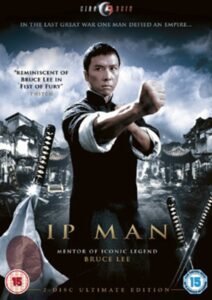
Wing Chun Books Worth Putting on Your Shelf
Practical / How-To Manuals
- Wing Chun; The Authentic Wing Chun Weapons – Jim Fung.
- The Book of Wing Chun vol. 1 & 2 – Chu Shong Tin.
Wing Chun in Manga & Comics
Wing Chun even turns up in Japanese manga and Western graphic novels, introducing the art to new audiences.
- Kenji (拳児) – Classic Shōnen Sunday series; later arcs feature Wing Chun masters and sticky-hands duels.
- Majo Taisen (War of Greedy Witches) – Character “Yim Wing-Chun” personifies the style’s founder.
- Ip Man: The Grandmaster of Kung Fu – 2023 comic one-shot retelling Ip Man’s journey, wooden-dummy form included.
- Anime cameo: Tekken: Bloodline OVA animates Leroy Smith’s Wing Chun stance work for game fans.
Get Started with Wing Chun
We hope this Wing Chun Kung Fu Guide has given you a solid introduction to the art and its many benefits. Whether you’re looking to learn self-defence, improve your fitness, or connect with martial arts tradition, there’s no better time to start. Sign up for a class today and take the first step on your Wing Chun journey.
Wing Chun Kung Fu Guide FAQ
How long until I’m proficient? Expect 3–6 months for solid basics; mastery is lifelong—think marathon, not sprint. You will learn some skills that can be used for basic self defense from day 1.
Is Wing Chun good for seniors? Yes—low‑impact stances, no heavy throws, and classes can be scaled for mobility issues.
Can I learn online? Online videos help with theory and solo drills, but partner work (Chi Sau, sparring) requires in‑person practice.
Does Wing Chun include meditation? Forms are moving meditation that improve focus and body awareness.
Do I need special gear to start? Just comfortable clothes; gloves/mouthguard/shin guards come later if sparring.
Will I get hurt? Beginner classes are light‑contact, with controlled drills and protective gear—bruises happen, injuries are rare. Once proficient you can engage in heavier sparring to whatever extent you feel comfortable with.
What if I’m unfit? Classes scale to all fitness levels, and can be tailored to your level. Fitness is not a pre-requisite for good wing chun, as our style emphasises the cultivation of ‘effortless force’.
Are there belts? Not in our school, but we may look at incorporating a grading structure at a later date.
Do women do well in Wing Chun? Absolutely. The art’s origin story and emphasis on technique over strength make it popular with women. Women-only classes can be arranged through discussion with the instructor, so feel free to contact us.
What is the difference between CST Wing Chun and other styles? Our style relies even less on muscular strength and ‘brute structure’ than many others. We learn to generate force in a different way than you will be accustomed to, by learning to release and relax the muscles and joints. Rather than focusing on specific techniques, we aim to be able to apply the same power and structure no matter the situation.
Do you fight competitively? Wing chun can be used to fight competitively, but it’s not usually our main training goal. Some of the concepts and structure can definitely be applied to MMA or sanshou style fights though, and we’d be happy to be part of your training regimen or spar together.
Is Wing Chun good for self-defense? Definitely, but again don’t expect that to be our primary focus. While you will learn some self-defense principles and gradually get stronger and more confident, our main driving force is the development of the ‘art’.
Does wing chun work in a real fight?This is a great question, and it really depends on the practitioner. Our wing chun is very different to most that are in the UK, and we have a large emphasis on being honest with yourself. Techniques are practiced with an open understanding of why we perform them and their strengths and weaknesses. Our method can definitely work in a real fight, and we pressure test what we practice in order to see what works and what doesn’t, but we mainly practice for the love of the art. Tl;dr yes, depending on how you practice it but maybe pick a self defence class if that’s your main goal.
How is your school different to others?
This question is tough to answer, but one of the main differences is our approach to structure. We go into much more depth than most styles in regards to the how and why a movement works. Whereas one style might teach you the arm shape for tan sau and the direction it is strongest in, we spend years gaining more awareness of each individual muscle and bone in the shoulder and arm and how they connect and relate to our overall structure. We combine this with exercises that test our structure with pressure from every angle, so that we can explore and study our bodies and apply powerful movements in any situation.
You’ve learned the history now become part of it
Not sure where to start? Contact us to have every questioned answered.